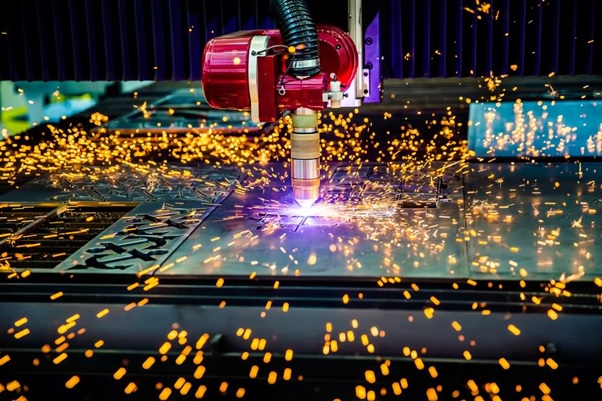What is CNC Machine?
Acronym CNC is computer numerical control . CNC machine is a subtraction process that creates a custom design from a workpiece through computer control. This process is subtractive in that the product is manufactured by cutting the material out of the initial pieces instead of adding material to make the product.
CNC machining can be described as a manufacturing process performed by a robot. This process can increase productivity because the machine can operate automatically without the need for constant operator attendance.
What Is The History Of CNC Machining?
The predecessor of CNC is the NC (numeric control) process. As explained by the Association of Manufacturing Engineers, “mark the beginning of the Second Industrial Revolution and the advent of an era in which the control of machinery and industrial processes moves from inaccurate drafts to accurate science.”
CNC machining started with punching tape-based technology. Before the rapid evolution of analog and digital technologies in the 1940s and 1950s 1960s
John T. Parsons considered the father of CNC machining. He developed numerical control, the basic principle of CNC machining. However, processing technology was invented even before Parsons. Then, in 1952, Richard Kegg in collaboration with the Massachusetts Institute of Technology (MIT) developed the first CNC milling machine. We bring you a wide assortment of a highly durable and precisely fabricated range of Hexagon Coupling Nuts that serve as the threaded fastener for joining
What Is The Basic Concept Of CNC Machining?
To understand how CNC works, you need to understand some basic concepts.
Numeric Control
This represents the automatic control of the machine tool. These machine tools include grind welders, grinders, waterjet cutters and hydraulic press machines.
Desktop CNC Machining
These are the minimal versions of CNC and are more suitable for working with soft materials such as wax, foam and plastic. This type of machining is mainly done by hobbyists, using smaller versions of CNC machines to make small products.
CAM
Computer-Aided Machining or Manufacturing (CAM) uses software to generate code to run CNC machines. To work with a CAM system, you need three things:
- The first is software that tells the machine in which direction the machine should travel.
- You also need a machine that can receive instructions.
- Finally, you need some post-processing capabilities that turn the instructions into a machine understandable language.
NC Code
This is a basic yet unique computer language designed to help CNC machines quickly understand and execute NC code (commonly referred to as G code). However, This is the language programmers use to tell machines how to manufacture something.
Post Processor
A post processor is a converter that converts G-Code written for one CNC machine into code that another CNC machine can understand and execute.
How Does CNC Machining Work?
CNC machines work by programming commands into software entered into a computer using a small keyboard connected to the machine. The CNC system then performs the programmed task in a way similar to a robot.
What Are The Various Types Of CNC Machines?
Other CNC machines have a variety of uses. Some of the most common types of CNC machines are mills, lathes, routers, CNC plasma cutting machines, and LaserJet cutting machines. You can see more examples of different types of CNC machines and their functions.
What Can A CNC Machine Make?
CNC machines can produce a huge variety of products from a variety of materials, including metal, plastic, foam, and wood. As long as the material can be cut, it can be used to manufacture products on CNC machines. Can be used for CNC metal lathe round bar, thread and external circle machining. CNC milling machines can used to process surfaces, keyways and other irregular shapes. The drilling machine can drill holes.
What Are The Pros And Cons Of CNC Machining?
Like any other technology, CNC machining has certain advantages and disadvantages. Let’s look at a few below.
Pros of CNC Machining
CNC machining has a significant cost advantage over conventional manufacturing in that it reduces labor costs. Significantly reduce manufacturing errors. In addition, the ability to consistently deliver uniform output makes mass production much easier than ever.
The CNC also gives you the flexibility to quickly reprogram your software to create entirely new parts or correct mistakes.
Cons of CNC Machining
The downside to CNC machining is the initial setup cost. Businesses may need to get a loan to procure CNC technology. However, if a company can increase its profits through CNC machining, it can quickly pay back its investment.
CNC machining is alive in the assumption of computer infallibility. This means that some people using CNC machining systems overlook the possibility of errors, so errors can easily get out of sight. However, you can alleviate this problem with proper training.
Finally, since it is a cutting process, CNC machining can generate waste and adversely affect the environment. Nevertheless, a waste management process can be applied so that the waste produced through manufacturing on CNC machines can be recycled.

